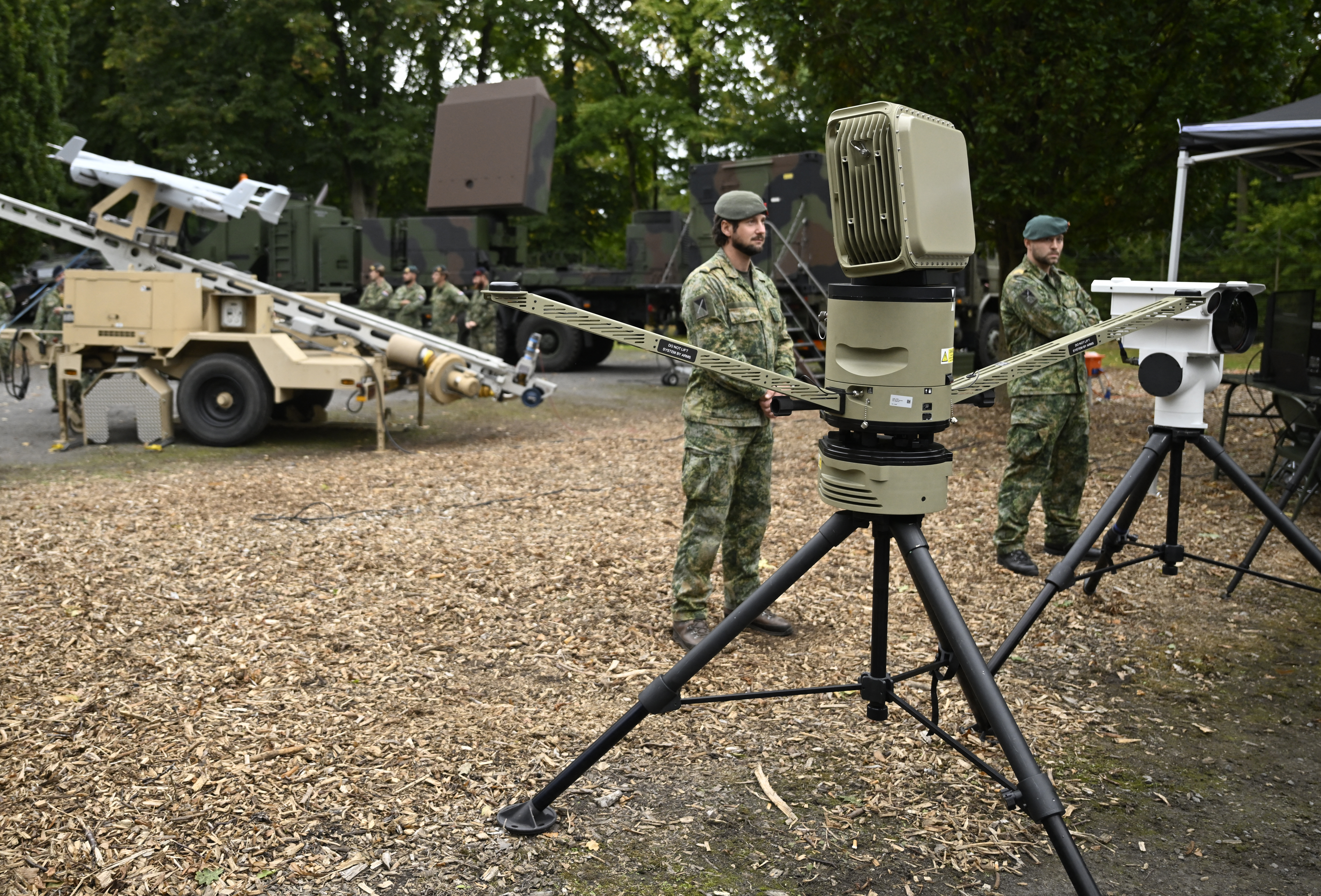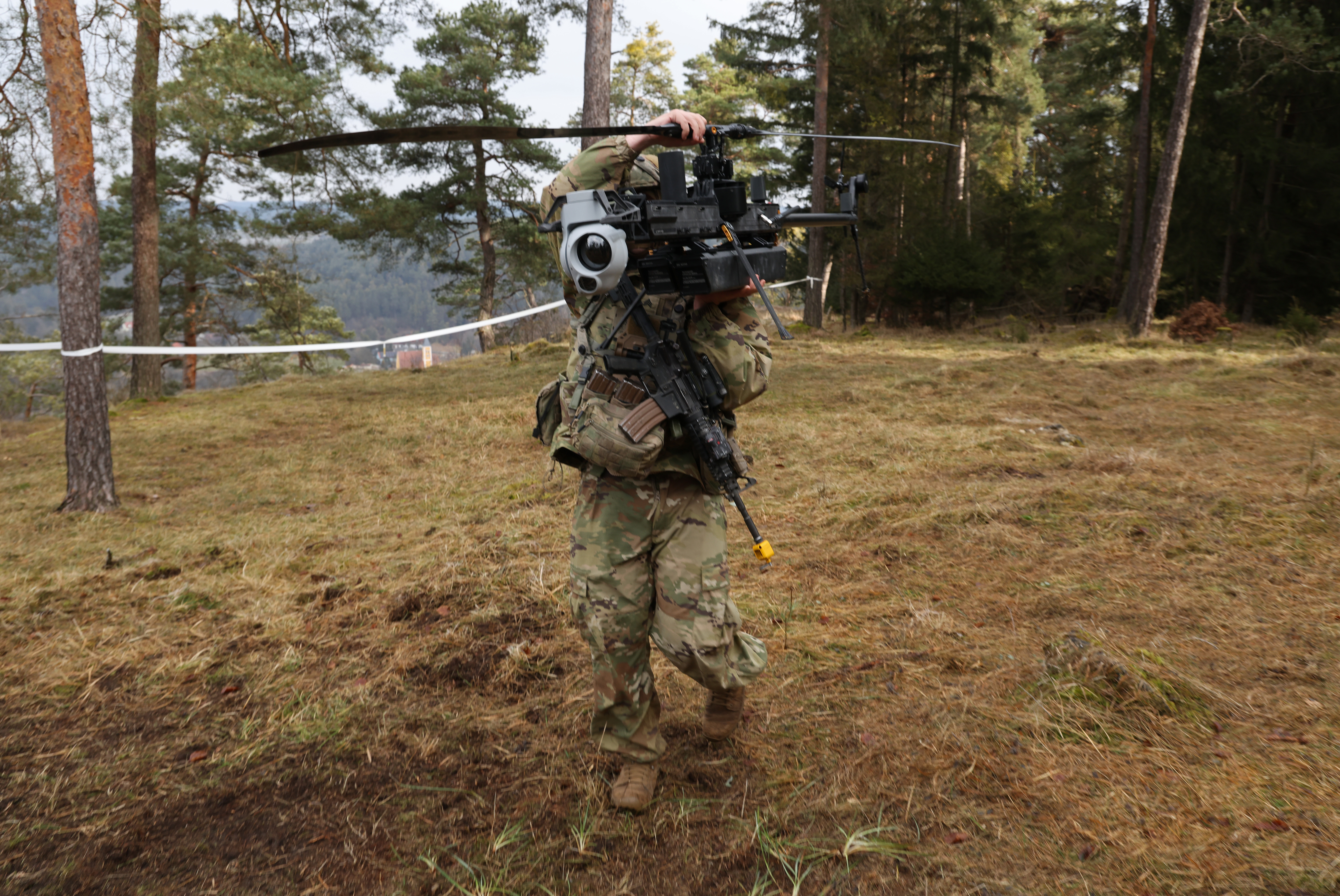
The U.S. military needs to ensure pilots value non-kinetic weapons just as much as missiles and guns to avoid losing the next war, a top Defense Advanced Research Projects Agency leader said.
Cyber and electromagnetic warfare are now crucial tools for modern warfare, but they are not emphasized enough as the go-to weapons for fighter pilots, DARPA Deputy Director Rob McHenry said during a June 25 event hosted by the Mitchell Institute for Aerospace Studies. In most pilot training exercises, such non-kinetic effects are separated from tactical operations training.
“They don’t actually see it. They don’t touch it. They don’t know it in the same way they know all the other combat capabilities that they’re responsible for,” McHenry said. “I think all of these are fundamental mistakes that will cost us the next war, because cyber effects are going to be deployed at every level of combat in any future operation.”
U.S. Strategic Command stood up the Joint Electromagnetic Spectrum Operations Center in July 2023, a key step in emphasizing non-kinetic warfare, but more can be done, according to Rep. Don Bacon (R-Neb.), a retired Air Force brigadier general who sits on the House Armed Services Committee.
“There’s a lot of studies, and there’s a lot of paper, but paper doesn’t jam and paper doesn’t hit missiles,” Bacon said at another Mitchell Institute event on June 24. “We need to have more capability output, and I’m just not seeing enough of it right now.”
To McHenry, non-kinetic effects need to be buttons on the cockpit controls. Just as pilots have a red button to fire a missile, they need to have a “blue button there that’s going to launch the cyber effect,” he said.
If the U.S. was to engage with China to defend Taiwan, for example, that would be an “electromagnetic armageddon, the likes of which we have never seen before,” McHenry said. Both sides will seek to jam each other’s radars and communications.
The problem is, “we currently have no capability to even test our systems and comprehend what that could look like operationally,” McHenry said.
DARPA has been working on a program dubbed the “Digital RF Battlefield Emulatory,” or DRBE, since 2019 that consists of the largest supercomputer on the planet designed to accurately model the bandwidth needed in real-world radio-frequency environments. As part of the effort, DARPA has selected Cerberus Systems and Ranovus to deliver wafer-size semiconductors that will provide new supercomputing capability to DRBE with a fraction of the power needed by current computer technology, according to a Cerberus press release.
“It’s a 12-inch wafer with more than a million cores on it that does real-time full physics simulation of the RF environment,” McHenry said. “You can literally hook [DRBE] up to the RF backend of a radar or communication system, and this computer will do all the physics modeling of how that RF energy operates in the environment.”
The next step will be to scale the capability up to simulate “real-world combat” using non-kinetic weapons, he said.
“That’s a gap we have to fill, because we could be counting on capabilities that … are not having the operational impact that we thought they would, because we simply can’t test any of that,” McHenry said.
The post Cyber, Electronic Warfare Key to Winning Future Fights, DARPA Official Says appeared first on Air & Space Forces Magazine.

Air, Cyber, Electronic Warfare, Air Force, cyber, DARPA, Electronic warfare, EW, fighters, non-kinetic warfare, Rob McHenry
Air & Space Forces Magazine
[crypto-donation-box type=”tabular” show-coin=”all”]












